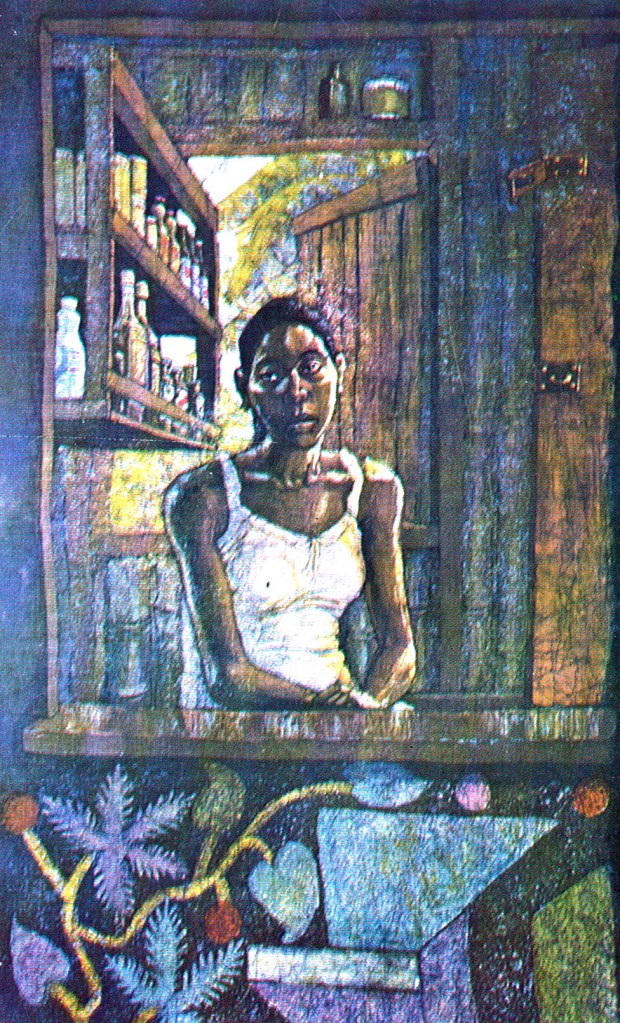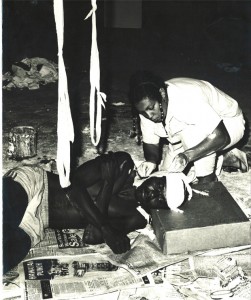Born Alison Dawn Scott in Mandeville in 1951, Dawn Scott had her first exhibition in 1971, when she showed a group of paintings, drawings and sculptures at the United States Information Service in Kingston. She started producing figurative batik paintings in the mid 1970s and first exhibited these in 1975 at the Creative Arts Centre of the University of the West Indies Mona Campus. She also lived in Barbados in the late 1970s and exhibited there at the Queen’s Park Gallery and Yoruba House in 1978.
Figurative batik was Dawn Scott’s main medium for some twenty years, culminating in her solo exhibition Nature Vive (1994) at the Grosvenor Galleries in Kingston. By far her most impactful exhibition, however, was her contribution to Six Options: Gallery Spaces Transformed (1985), the National Gallery’s (and Jamaica’s) first exhibition of installation art. On this occasion, she produced A Cultural Object, a haunting, spiral-shaped “zinc fence” structure which transposed some of the realities of Jamaica’s inner city life into the gallery spaces of the National Gallery.
Dawn Scott has taught textile art at the School of Visual Arts, Edna Manley College of the Visual and Performing Arts, where she recently also served as an external examiner. She was also active as a fashion designer and her handmade, hand-dyed clothes were in great demand, locally, in the 1980s and early 1990s. Around 1980, she had been closely involved in the restoration of the Harmony Hall manse in Tower Isle, St Mary, and designed the ornamental fretwork for the building. Her long-standing interest in interior design and architectural detailing became her primary professional preoccupation in the latter years of her life and she was involved in major projects such as the Island Village in Ocho Rios and the Goldeneye Villas in Oracabessa, Portland, on both of which she collaborated with the acclaimed Jamaican architect Ann Hodges. Each of these projects adapted aspects of Jamaica’s architectural heritage in a contemporary context.
Dawn Scott received the Institute of Jamaica’s Centenary Medal in 1979 and a Bronze Musgrave Medal for merit in the Visual Arts in 1999.


